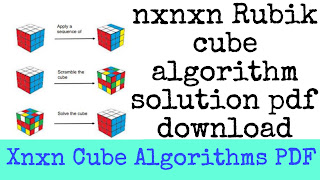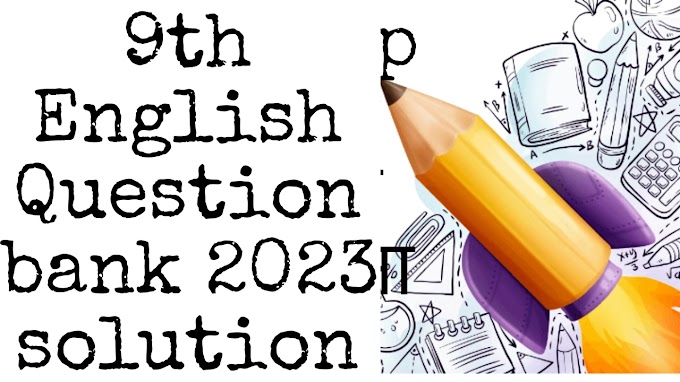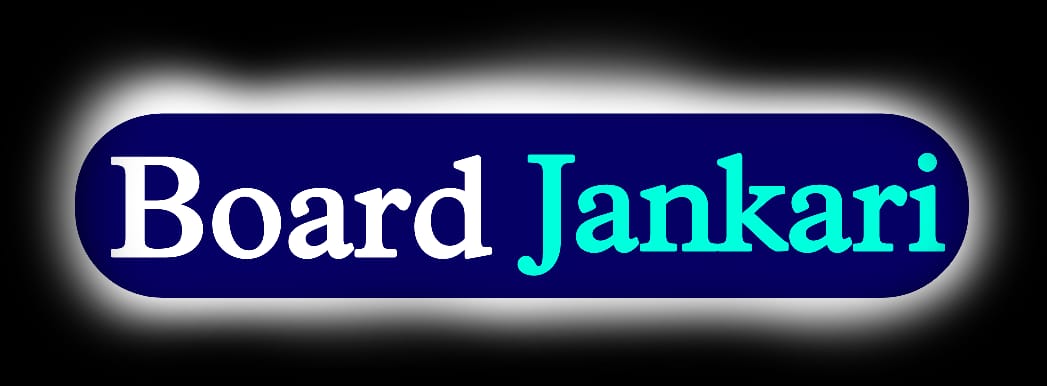Nxnxn Rubik's Cube Algorithms 2024 PDF- is probably one of the most illustrious puzzles up to date. Nxnxn Rubik's Cube Algorithms 2024 PDF And the reason made it so prominent is still not certain. Since its invention in 1974 by Hungarian sculptor and professor of architecture Emo Rubik, it has captured the imagination of millions of all age and is widely considered to be the world's best-selling toy.
nxnxn Rubik cube algorithm solution
There are competitions held every year for cube lover to compete the records and organized by WCA (World Cube Association). The current world record for a single time on the 3x3x3 Rubik's Cube in competition is 5.25 seconds, set by Collin Burns in April 2015.
There is a variation of cubes which are sold commercially from 2x2x2 to 7x7x7. This paper will discuss about the traditional 3x3x3 Rubik's Cube, one that is simple enough to study and understand but complex enough to exploit and investigate from many points of view.
Xnxnxnxn Cube Algorithms 2024
INTRODUCTION
Xnxnxnxn Cube Algorithms 2024
INTRODUCTION
Xnxnxnxn Cube Algorithms PDF The project's aim is to write a software program to simulate the traditional 3x3x3 Rubik's Cube. The virtual cube is used for simulating the cube and keeping track of the moves.
Rubik's Cube Algorithms
Instead of using the physical cube to design and test any algorithms. It is better to do it with a virtual cube. Besides the basic operations which can be applied on the normal Rubik's Cube, the program also implemented the features which can help to scramble and solve the cube with built-in algorithms.
The virtual cube was created using OpenGL/SDL which are C++ graphic libraries for rendering and defining 2D, 3D images. The version control I used during the programming stage in this project was GitHub. Version control can be useful at helping keep track of progress throughout a project. By keeping a record of previous commits and branches previous versions of a project can be restored if required. Below is the link to my project repository:
Xnxn cube algorithm short details
Xnxn cube algorithm short details RUBIK'S Cube This chapter provides us with the basic understanding of the structure of Rubik's Cube, the notations of the Cube's rotations and some calculations on the bounds of the Cube. In this paper, we use the word "the Cube" or sometimes "Rubik's Cube" in this paper to refer to the entire cube. Structure Six faces of the Cube will be differentiated by 6 different solid colors: white, yellow, blue, green, red and orange. The model we use to give the demonstrations in this thesis is: white is opposite yellow, blue is opposite green and red is opposite orange; and this is currently the most popular sold model also (Dempsey 1988.).
Right
GRAPH 2. Cuibes of a Rubik's Cube
On each face, there are 9 squares which are called facets. They are usually covered
by colored stickers. And there are total 6 x 9-54 facets on a cube. There are also 3
types of facets: center facets, edge facets and corner facets based on their positions.
These facets can be seen in Graph 3.
GRAPH 3. Facets of a Rubik's Cube
Notations
Notation plays an important role because it is meaningful, concise and really helpful to give the better demonstration for the algorithms. There are variation of ways to denote faces, cubies and other things relating to Rubik's Cube. In this paper, some of the notations are adopted from "Singmaster notation which were developed from David Singmaster, an English mathematician, to denote a sequence of moves (Joyner 2008.).
The upper-case letters are used denote the faces of the Cube. They are: F (Front),
B (Back), U (Up), D (Down), L (Left), R (Right) Cubies will be denated using string of upper-case letters. The edge cubies will be denoted by XY (YX), where X and Y are the faces on which the cubie is located. The corner cubies will be denoted by XYZ, where X is the face on which the cubie is located, Y and Z are the faces the cubie borders to. For example, UF is the edge cubie whose one face is on the up face, and the other is on the front face; ULB is the corner cubie whose 3 faces are on up face, left face and back face.
Nxnxn Rubik Cube solution 2024 overview
Nxnxn Rubik Cube solution 2024 Pdf Facets will be denoted using string of lower-case letters. The edge facets will be denoted by xy, where x is the face on which the facet is located and y is the face the facet borders to. The corner facets will be denoted by xyz, where x is the face on which the facet is located, y and z are the faces the facet borders to There are same notations for the faces to denote the rotations (or the moves)
How to download xnxnxn Cube Algorithms Books
Therefore, U, D, F, B, L and R are used to denote the rotations of that face a quarter-
turn clockwise. For example, U means a clockwise quarter-tum on up face (graph 4). F means a clockwise quarter-turn on front face and so on. The same letters but with lower-case will be used to denote the quarter-turn counter-clockwise rotation.
Therefore, u means the quarter rotation of the up face counter-clockwise, d means the quarter rotation of the down face counter-clockwise and so on.
State 1
State 2
GRAPH 4. Up-face rotation turns the Cube from state 1 to state 2.
When a single move is repeated several times, instead of writing each separately, the move sequence can be written with the power number. For example, UUU will be rewritten UP (or simply U3) and UUUUU will be rewritten U (or simply US). Notice that rotating the up face 4 times will return the Cube the state before applying the moves; on the other hand, U* equals doing nothing to the Cube. After this if applying one more U move, it simply rotates the up face a quarter tum clockwise and just like staring a new cycle, then we have U-U, U-UP, etc.
XNXN Cube Algorithms free download
Later, with the help of mathematical tool, it will be proven that because the move U has the order of 4, then after every 4 single moves, the effect will be the same, like U-U
-U... Also rotating the up face 90° clockwise three times would end up the same result as rotating the up face 90° counter-clockwise; hence, UP-u. In conclusion, for any single face, say U for example,
For the notation of the rotations of the entire cube. X will denote the rotation of the entire cube as it doing an R tum; and x will be the inverse of X. Y will denote the rotation of the entire cube as if doing a U turn; and y will be the inverse of Y. Z will denote the rotation of the entire cube as if doing a F tum; and z will be the inverse of Z.
Xnxn cube algorithms
These moves are not primitive moves and are often not counted as a single move in most situations. A sequence of moves is a combination of moves followed by one each other and can be written like a string of letters like this RDDuF2fd". The algorithm described in this paper will be presented as a set of sequences of moves.
1.3 Bounds on Rubik's Cube Let's call a permutation of all the facets on a Rubik's Cube is a configuration. Let's find out how many possible configurations there can be in total.
nxnxn Rubik solution step to step guide book
Because a configuration of the Cube is not only regarding the positions of all cubies.
but also regarding the orientations of all cubies on the Cube. Hence not every
configuration of the Cube is solvable. If you disassemble the cube and assemble the cubies back, there is probability that the Cube will be unsolvable (Jayner 2008).
There are 8 corner cubies, but the orientations of 7 comer cubies will decide the orientation of the last corner cubie. Similarly, the orientations of 11 edge cubies will decide the orientation of the last edge cubie.
This chapter gives us the general overview of the implementation and the design of the program. It starts by explaining the main functions of the program, how the software is designed and some of the features of the program in detail. Then the architecture of the software will be explained by showing some UML diagrams, and some implementation code snippets of the main functions and finally the software development environment of the program.
3.1 Overview
The essential purpose of the virtual cube is for the users to simulate the cube as if they are doing on the real physical cube. Specifically, the users can apply most of the basic moves on the cube such as the twists on a single face or the rotations on the entire cube. Moreover, the virtual cube also has some more built-in special functions which are scrambling the cube and solving the cube
Rubik cube algorithm
Simulation of
Rubik's Cube
The input cube
GRAPH 5. Simulation model.
 |
| Xnxnxnxn Cube Algorithms 2024 |
Xnxn cube algorithm short details
Xnxn cube algorithm short details RUBIK'S Cube This chapter provides us with the basic understanding of the structure of Rubik's Cube, the notations of the Cube's rotations and some calculations on the bounds of the Cube. In this paper, we use the word "the Cube" or sometimes "Rubik's Cube" in this paper to refer to the entire cube. Structure Six faces of the Cube will be differentiated by 6 different solid colors: white, yellow, blue, green, red and orange. The model we use to give the demonstrations in this thesis is: white is opposite yellow, blue is opposite green and red is opposite orange; and this is currently the most popular sold model also (Dempsey 1988.).
The face is currently facing you when you hold the Cube is the front face, then the face opposite the front is the back face, the face above or on the top of the front is the up face, the face opposite the up is the down face, the face directly to the left of the front is left face; and the face directly to the right of the front is the right face. The demonstration of faces can be seen
in Graph 1.
Up
Down
Back
Left
GRAPH 1. Six faces of a 3x3x3 Rubik's Cube
blue: center cubie
yellow: edge cubie
red: comer cubie
Nxnxn Cube Algorithms 2024 summary
The Cube consists of smaller cubes which are called cubies. In the actual physical
cube, just 26 cubies are visible, the 27 cubie in the center does not exist. There are 3 different types of cubies: center cubies, edge cubies and corner cubies. These cubbies can be seen in graph 2. In total, there are 6 center cubies, 12 edge cubies and 8 comer cubies. After any sequence of moves or rotations, center cubies will be replaced by other center positions, edge cubies will be replaced by other edge cubies, and corner cubies will be replaced by other comer cubies.
Front
blue: center facet
yellow edge facet
red: comer facet
in Graph 1.
Up
Down
Back
Left
GRAPH 1. Six faces of a 3x3x3 Rubik's Cube
blue: center cubie
yellow: edge cubie
red: comer cubie
Nxnxn Cube Algorithms 2024 summary
The Cube consists of smaller cubes which are called cubies. In the actual physical
cube, just 26 cubies are visible, the 27 cubie in the center does not exist. There are 3 different types of cubies: center cubies, edge cubies and corner cubies. These cubbies can be seen in graph 2. In total, there are 6 center cubies, 12 edge cubies and 8 comer cubies. After any sequence of moves or rotations, center cubies will be replaced by other center positions, edge cubies will be replaced by other edge cubies, and corner cubies will be replaced by other comer cubies.
Front
blue: center facet
yellow edge facet
red: comer facet
Right
GRAPH 2. Cuibes of a Rubik's Cube
On each face, there are 9 squares which are called facets. They are usually covered
by colored stickers. And there are total 6 x 9-54 facets on a cube. There are also 3
types of facets: center facets, edge facets and corner facets based on their positions.
These facets can be seen in Graph 3.
GRAPH 3. Facets of a Rubik's Cube
Notations
Notation plays an important role because it is meaningful, concise and really helpful to give the better demonstration for the algorithms. There are variation of ways to denote faces, cubies and other things relating to Rubik's Cube. In this paper, some of the notations are adopted from "Singmaster notation which were developed from David Singmaster, an English mathematician, to denote a sequence of moves (Joyner 2008.).
The upper-case letters are used denote the faces of the Cube. They are: F (Front),
B (Back), U (Up), D (Down), L (Left), R (Right) Cubies will be denated using string of upper-case letters. The edge cubies will be denoted by XY (YX), where X and Y are the faces on which the cubie is located. The corner cubies will be denoted by XYZ, where X is the face on which the cubie is located, Y and Z are the faces the cubie borders to. For example, UF is the edge cubie whose one face is on the up face, and the other is on the front face; ULB is the corner cubie whose 3 faces are on up face, left face and back face.
Nxnxn Rubik Cube solution 2024 overview
Nxnxn Rubik Cube solution 2024 Pdf Facets will be denoted using string of lower-case letters. The edge facets will be denoted by xy, where x is the face on which the facet is located and y is the face the facet borders to. The corner facets will be denoted by xyz, where x is the face on which the facet is located, y and z are the faces the facet borders to There are same notations for the faces to denote the rotations (or the moves)
How to download xnxnxn Cube Algorithms Books
Therefore, U, D, F, B, L and R are used to denote the rotations of that face a quarter-
turn clockwise. For example, U means a clockwise quarter-tum on up face (graph 4). F means a clockwise quarter-turn on front face and so on. The same letters but with lower-case will be used to denote the quarter-turn counter-clockwise rotation.
Therefore, u means the quarter rotation of the up face counter-clockwise, d means the quarter rotation of the down face counter-clockwise and so on.
State 1
State 2
GRAPH 4. Up-face rotation turns the Cube from state 1 to state 2.
When a single move is repeated several times, instead of writing each separately, the move sequence can be written with the power number. For example, UUU will be rewritten UP (or simply U3) and UUUUU will be rewritten U (or simply US). Notice that rotating the up face 4 times will return the Cube the state before applying the moves; on the other hand, U* equals doing nothing to the Cube. After this if applying one more U move, it simply rotates the up face a quarter tum clockwise and just like staring a new cycle, then we have U-U, U-UP, etc.
XNXN Cube Algorithms free download
Later, with the help of mathematical tool, it will be proven that because the move U has the order of 4, then after every 4 single moves, the effect will be the same, like U-U
-U... Also rotating the up face 90° clockwise three times would end up the same result as rotating the up face 90° counter-clockwise; hence, UP-u. In conclusion, for any single face, say U for example,
we will have 4 different types of rotations: e, U, U², and u. To sum up, there are 3 primitive moves on a face because e means doing nothing, hence there are 3 x 6-18 primitive moves in total. Any other moves on the Cube can be written as a combination of primitive moves.
For the notation of the rotations of the entire cube. X will denote the rotation of the entire cube as it doing an R tum; and x will be the inverse of X. Y will denote the rotation of the entire cube as if doing a U turn; and y will be the inverse of Y. Z will denote the rotation of the entire cube as if doing a F tum; and z will be the inverse of Z.
Xnxn cube algorithms
These moves are not primitive moves and are often not counted as a single move in most situations. A sequence of moves is a combination of moves followed by one each other and can be written like a string of letters like this RDDuF2fd". The algorithm described in this paper will be presented as a set of sequences of moves.
1.3 Bounds on Rubik's Cube Let's call a permutation of all the facets on a Rubik's Cube is a configuration. Let's find out how many possible configurations there can be in total.
nxnxn Rubik solution step to step guide book
Because a configuration of the Cube is not only regarding the positions of all cubies.
but also regarding the orientations of all cubies on the Cube. Hence not every
configuration of the Cube is solvable. If you disassemble the cube and assemble the cubies back, there is probability that the Cube will be unsolvable (Jayner 2008).
There are 8 corner cubies, but the orientations of 7 comer cubies will decide the orientation of the last corner cubie. Similarly, the orientations of 11 edge cubies will decide the orientation of the last edge cubie.
The more detailed explanation about how to come up with these numbers will be presented in the "Unsolvable configurations part where we have enough theoretically mathematical background sufficient to explain the phenomenon. This narrows down to
IMPLEMENTATION AND DESIGN
IMPLEMENTATION AND DESIGN
This chapter gives us the general overview of the implementation and the design of the program. It starts by explaining the main functions of the program, how the software is designed and some of the features of the program in detail. Then the architecture of the software will be explained by showing some UML diagrams, and some implementation code snippets of the main functions and finally the software development environment of the program.
3.1 Overview
The essential purpose of the virtual cube is for the users to simulate the cube as if they are doing on the real physical cube. Specifically, the users can apply most of the basic moves on the cube such as the twists on a single face or the rotations on the entire cube. Moreover, the virtual cube also has some more built-in special functions which are scrambling the cube and solving the cube
Rubik cube algorithm
Simulation of
Rubik's Cube
The input cube
GRAPH 5. Simulation model.
In this case, the cube with a given state can be the input for the process and the output of that process will be the cube with a different state. Therefore, three main features of the program can be considered as three processes in the simulation model and can be summarized visually in Graph 6. Graph 6 shows that the program can provide us the utilities to simulate the real cube such as applying any sequence of moves, scrambling the cube and even solving the cube. Apply asequence of
GUI
GUI
Scramble the cube The output cube Solve the cube
GRAPH 6. The visual display of 3 main processes of the program.
The GUI of the virtual cube consists 2 windows. One is the normal console window to interact with users and deal with input/output functions as well; the other is the SDL window which displays the cube in 3D representation.
The GUI of the virtual cube consists 2 windows. One is the normal console window to interact with users and deal with input/output functions as well; the other is the SDL window which displays the cube in 3D representation.






